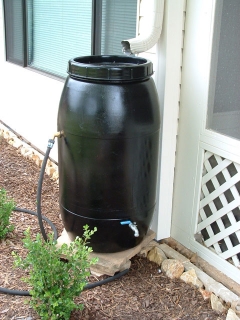In a world where freshwater resources are increasingly strained, the importance of water conservation cannot be overstated. Every drop counts, and adopting practical strategies for water conservation is not only beneficial for the environment but also for our wallets.
From simple lifestyle changes to innovative technologies, there are numerous ways individuals and communities can contribute to the preservation of this precious resource. In this blog post, we’ll explore some practical strategies for water conservation that you can implement in your daily life.
Fix Leaks Promptly:
One of the most effective ways to conserve water is by fixing leaks in faucets, toilets, and pipes as soon as they are detected. Even a small leak can waste significant amounts of water over time. Regularly check for leaks in your home and repair them promptly to prevent unnecessary water loss.
Install Water-Saving Devices:
Consider installing water-saving devices such as low-flow showerheads and faucet aerators. These devices reduce water usage without sacrificing water pressure, allowing you to enjoy the same level of comfort while using less water. Similarly, installing a dual-flush toilet can significantly reduce water consumption with each flush.
Be Mindful of Outdoor Water Usage:
Outdoor water usage, particularly for landscaping and gardening, can account for a significant portion of household water consumption. To minimize water waste, water your lawn and plants during the early morning or late evening when evaporation rates are lowest. Additionally, consider using drought-resistant plants in your landscaping to reduce the need for frequent watering.
Collect Rainwater:
Harvesting rainwater is an excellent way to reduce reliance on municipal water sources for outdoor use. Install a rain barrel or cistern to collect rainwater from your roof, which can then be used for watering plants, washing cars, or other non-potable uses. Rainwater harvesting not only conserves water but also reduces runoff and erosion in your yard.
Practice Water-Efficient Gardening:
In addition to collecting rainwater, there are several water-efficient gardening practices you can adopt to conserve water. Mulching your garden beds helps retain soil moisture and reduces the need for frequent watering. Grouping plants with similar water requirements together allows you to water more efficiently, ensuring that each plant receives the appropriate amount of water.
Reuse Greywater:
Greywater, wastewater generated from activities such as bathing and laundry, can be reused for purposes other than drinking, such as flushing toilets or irrigating gardens. Installing a greywater recycling system allows you to capture and treat greywater for reuse, reducing overall water consumption and wastewater generation in your home.
Monitor Your Water Usage:
Being aware of your water usage patterns can help identify areas where you can make improvements. Consider installing a water meter or using a water monitoring app to track your water usage over time. By identifying leaks, changing habits, and implementing water-saving measures, you can make informed decisions to reduce your water footprint.
Educate Others:
Spread awareness about the importance of water conservation within your community. Organize workshops or community events to share practical tips and strategies for conserving water. Encourage your friends, family, and neighbors to join you in adopting water-saving practices and making a positive impact on the environment.
Support Water-Efficient Policies:
Advocate for water-efficient policies at the local, regional, and national levels. Support initiatives that promote water conservation, such as water-efficient building codes, incentives for water-saving technologies, and investments in water infrastructure upgrades. By supporting sustainable water management practices, you can help ensure a more resilient water future for generations to come.
Consider Xeriscaping
One practical strategy for water conservation is xeriscaping. Xeriscaping in Utah involves landscaping with plants that are well-suited to the local climate and require minimal irrigation. By selecting drought-resistant plants, incorporating mulch to retain soil moisture, and designing landscapes that minimize the need for supplemental watering, xeriscaping can significantly reduce outdoor water usage.
This sustainable landscaping approach not only conserves water but also creates beautiful and low-maintenance outdoor spaces that thrive in arid conditions.
In Conclusion
Water conservation is a critical component of sustainable living and environmental stewardship. By implementing practical strategies for water conservation in our daily lives, we can contribute to the preservation of this vital resource for future generations. Whether it’s fixing leaks, installing water-saving devices, practicing water-efficient gardening, or supporting water-efficient policies, every action we take to conserve water makes a difference. Together, let’s flow forward towards a more water-conscious future.
